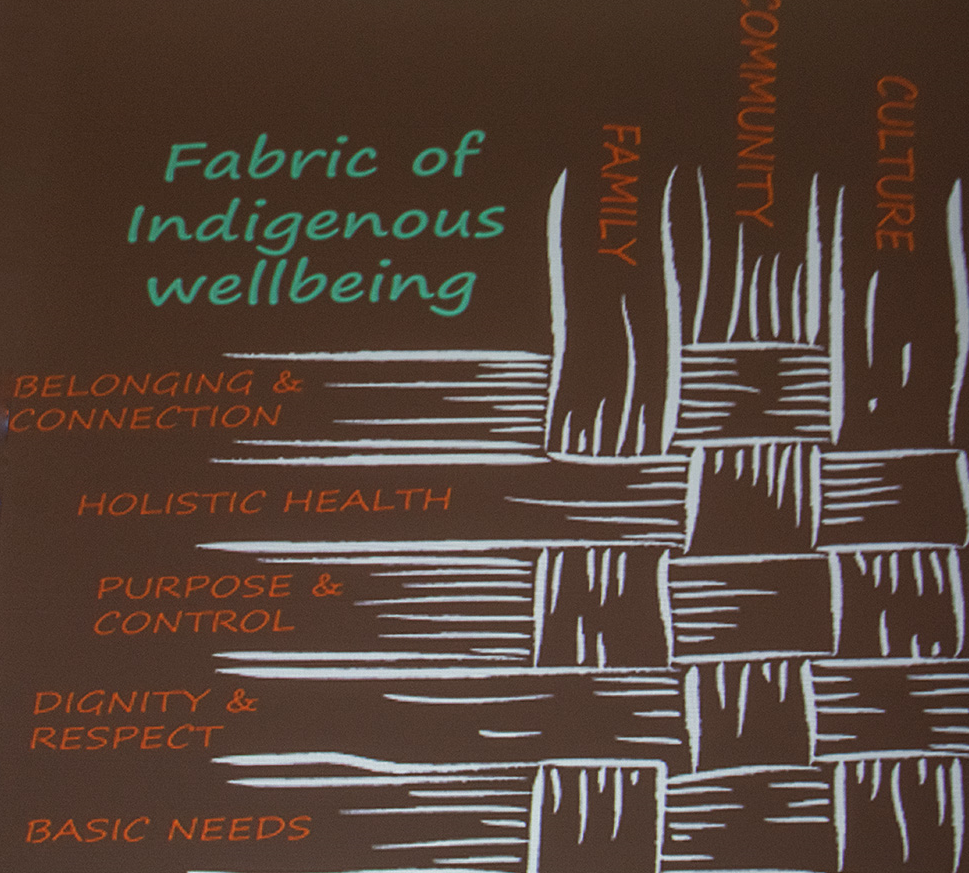A plenary session on “Overcoming the Toxic Drug Crisis" at Healing Our Spirit Worldwide (HOSW) provided a diverse range of perspectives from around the world on this difficult topic.
The session included Dr. Nel Wieman, Acting Chief Medical Officer at the First Nations Health Authority; Dr. Adrienne Dillard with the Papa Ola Lōkahi and Hawaiʻi Health and Harm Reduction Center; and Dr. Scott Wilson, Aboriginal Drug and Alcohol Council (South Australia).
Each speaker had differing harm reduction approaches to the toxic drug crisis, as represented by the needs of the Indigenous peoples they represent in their countries.
Dr. Nel Wieman, First Nations Health Authority (FNHA)
Dr. Wieman opened the plenary, saying that she was speaking not just as a doctor, but also as an Indigenous woman. She said the FNHA's harm reduction approach has been to reestablish connection to culture in healing the underlying trauma that is driving the toxic drug crisis.
First Nations people are disproportionately impacted by toxic drugs. Although representing just 3.3 per cent of the population in British Columbia, First Nations represented 16.4 per cent of toxic drug poisoning deaths in 2022.
“Our numbers have gone up and up and up and there has been a terrible collision between the pandemic and the toxic drug crisis," said Dr. Wieman.
However, she said, it's important to focus on hope and healing in bringing those numbers down. Things like the three-year trial of decriminalizing possession of some illicit drugs, the creation of the First Nations Virtual Substance Use and Psychiatry Service, and deployment of harm reduction principles are aimed at saving lives.
More importantly, Dr. Wieman said we need to treat people who use substances with dignity, show them compassion, and be mindful of underlying trauma.
“We need to change how we think about, talk about, and choose to treat people who use substances," she said.
Dr. Adrienne Dillard, Papa Ola Lōkahi and Hawaiʻi Health and Harm Reduction Center
Dr. Dillard began by saying that she was honoured to speak about the work she does for Native Hawaiians, as a non-Indigenous person with 35 years' experience working for the Papa Ola Lōkahi.
Since beginning in 1988, the organization's motto has been to “honour the culture, honour the people, honour the space" when working to improve Native Hawaiian health and wellbeing.
Dr. Dillard said that when they began work in dispersing harm reduction toolkits to community, they quickly realized that these principles were already central to the work they were doing.
“When we looked at harm reduction, we realized it's what we already do," she said. “We were doing that all along without even realizing it."
Papa Ola Lōkahi developed a STRONG harm reduction framework: Self-reliant, Tenacious, Resilient, Outstanding, Noble, Generous. The goal is to instill culture across the spectrum of services.
Dr. Dillard said the impact of drug use is apparent, with many people missing from communities. However, they continue undaunted, working from the heart, meeting people where they're at, and never denying access.
“We are in the streets doing whatever we need to do to serve."
Dr. Scott Wilson, CEO of Aboriginal Drug and Alcohol Council (South Australia)
The final speaker began by noting that one of the barriers to help is the dual-impact of stigma and being Indigenous.
Dr. Wilson said the other problem for Indigenous people who use substances is their “invisibility" to non-Indigenous people and governments. As well, he said substances carry great stigma and shame for people who use them, mainly because of their illicit nature.
“We're actually hiding," he said.
Dr. Wilson has spent over 30 years working on the Aboriginal Drug and Alcohol Council, which is part of the International Indigenous Drug Policy Alliance.
In Australia, more people die from overdose than are killed in automobile accidents, or a death to drugs every four hours. Aboriginal and Torres Strait Islanders are four to five times more likely to die from overdose than non-Indigenous Australians.
Dr. Wilson said he wants to bring the plight of toxic drugs to an international audience by bringing forward resolutions to the United Nations (UN) Commission on Narcotic Drugs. Unfortunately, he added, Indigenous people have to get a government sponsor to bring forward resolutions to the UN because there is no official recognition for Indigenous people on the international stage.
He pointed out that the 50-year “war on drugs" has only led to millions of deaths, something that has also wasted money that could have been spent helping people instead.
“You can't be having that many people dying each year if you're actually doing a good job."
Summary
Although British Columbia, Hawaii and Australia are nearly as geographically distant on Earth as it is possible to be, the core values and concepts surrounding Indigenous harm reduction were similar in approach. Each speaker talked about reducing stigma, meeting people where they're at, and ensuring Indigenous culture and perspectives are at the core of harm reduction work.


